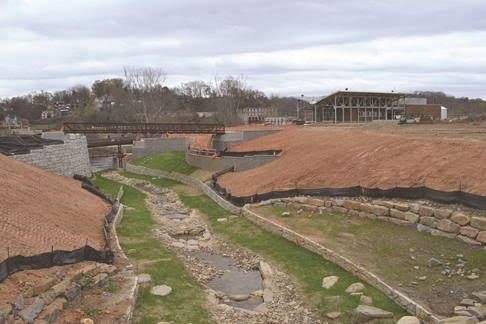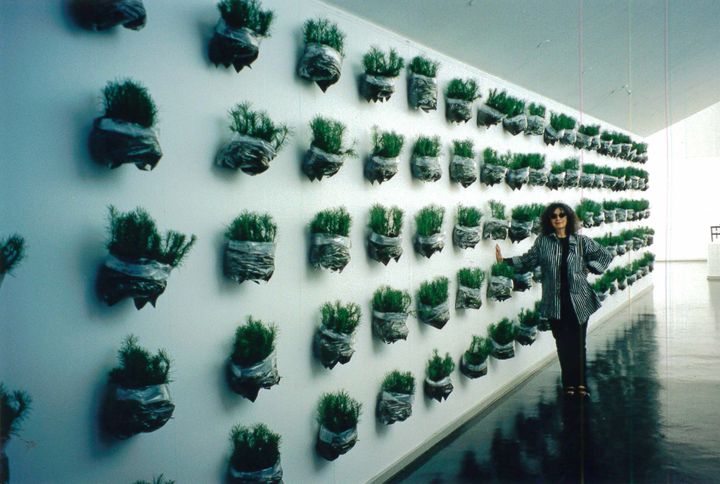CHS 2030: Nurturing Our Urban Creeks
Gadsden Creek is only one of the Charleston water bodies with “urban creek syndrome:” contaminants from surrounding car traffic and development, reduced water intake from inflexible anti-flood infrastructure, and reduced ecological diversity. To put it simply, we don’t take care of our creeks.

by Belvin Olasov
As any hydrological engineer knows, systems are complicated. Joshua Robinson has built his career by accepting and working with the inevitable chaos and complexities of ecosystems, whether in marsh restoration or green building neighborhoods. Now, he’s found himself in the advocate position for an approach that Charleston consistently resists: allowing for urban creeks and salt marsh to flourish.
His most recent proposal hones in on Gadsden Creek, the 4 remaining acres of salt marsh where there were once over 95 acres on the peninsula’s west border. Those who support filling in the creek to expand the Westedge development have claimed that rehabilitating the creek would be impossible, too complicated, the fanciful dream of activists. But to ecological engineer Joshua Robinson, rehabilitating the creek is not only totally possible but the exact sort of eco-urban infrastructure that’s needed in the Lowcountry.
“I think any opportunity we can find to use natural systems to manage water, both tidal water and stormwater, we should take those opportunities. And we should place a premium on the natural systems that continue to exist,” Robinson said.
To Robinson, Gadsden Creek remains an incredible natural resource and a soul-nourishing link to nature for the neighboring Gadsden Green community. For the City of Charleston to look at the damage it’s done – transforming the creek into landfill, giving land that once served Charleston’s black population over to development – and justifying filling in the remainder of the tidal creek because of that strikes Robinson as deeply wrong.
“It’s very offensive to try to do this victory lap and and, say, oh well, you know, we’re gonna help you out because it’s flooding and it’s polluted and we’re doing something good for you. It’s like, you created this problem? That is the definition of gaslighting.”
Learning From Others' Success
Robinson’s Gadsden Creek proposal draws on the many projects from other cities that share crucial qualities with the Gadsden Creek case. Rehabilitating an urban creek with pollution concerns? Look to Proctor Creek in Atlanta, Georgia, or Waller Creek in Austin, Texas. Dealing with an old landfill that needs rehabilitation? Look to the planned reclamation of the NYC Fresh Kills Landfill, where tidal creeks and coastal marsh became the largest landfill in the world that is now planned to return to marsh and parks for public waterfront access.
The old landfill site on the banks of the French Broad River in the city of Asheville is a standout blueprint for a restored Gadsden Creek. For years, it was a salvage yard in an urban environment with a small creek flowing through, prone to extreme flooding. So when the New Belgium Brewery went to build in Asheville and were looking at that location, they were planning on piping, filling, and building over the creek, having been told that it was unsalvageable as a natural resource.
But the New Belgium Brewery leadership considered themselves environmental stewards and wanted to find another way. They pursued grant funding, got the resources, and enlisted ecological engineers (including Joshua Robinson) to restore the creek.
“Some nonprofit groups got behind the project and other local ecological designers got engaged where the creek went from being this ditch – like literally a giant ditch, with car parts and crushed cars on the banks of it… an order of magnitude more polluted looking and feeling, and actually polluted, than Gadsden Creek, right? It went from that to being this beautiful creek,” Robinson said. “To me, it shows how a degraded landfill with real water quality problems can be salvaged and improved, and then turned into this beautiful success story, creating this community resource of this restored creek that helped to resolve flooding.”
Green vs Gray
When Dutch hydrological engineers came to Charleston and shared their best practices on working with water in the Dutch Dialogues, their thesis was clear: preserve and expand green infrastructure, such as wetlands, berms, and urban vegetation. Robinson considers saltmarsh to be an unbeatable tool for stormwater control and water quality improvement, and one that dodges key issues that come with underground piping.
“That sort of underground subsurface gray infrastructure, that needs to be a last resort, because once that water goes underground, it can’t be seen. Any issues with the drainage infrastructure can’t be repaired or visualized in real time,” Robinson said. “The creek, as it is now, if there were to be a blockage during the flood, it could be visualized – humans could literally remove the blockage.”
He does see potential for gray infrastructure being used in tandem with a revitalized creek, such as taking Hagood Avenue, which has sunk multiple feet since being built on top of the former Gadsden Creek, and elevating the road to protect the Gadsden Green community next-door. Raising barriers could also protect Gadsden Creek from car runoff pollution.
Too much decisionmaking, in Robinson’s eyes, is motivated by fear. Developers and politicians pitch hard infrastructure like it’s the solution to all of our problems, like it’ll bring the security that we crave. Robinson and his team, on the other hand, harken back to the words of Wendell Berry: what would nature be doing if we were doing nothing?
“The idea of, we build a storm surge barrier, we can go back to eating and drinking and being married and happy hour can continue. We fixed it,” Robinson said. “I sometimes feel like the dude in the sandwich board on the street with the bullhorn. It’ll fix it most of the time, but when it doesn’t fix it, it’s just gonna be a whole lot worse than if we haven’t done anything to it.”
Taking Care of Every Creek
Gadsden Creek is only one of the Charleston water bodies with “urban creek syndrome:” contaminants from surrounding car traffic and development, reduced water intake from inflexible anti-flood infrastructure, and reduced ecological diversity. To put it simply, we don’t take care of our creeks.
“We don’t have a whole lot of areas where visitors and residents in the city can interact with an impact ecosystem, and certainly few opportunities for people to actually interact in a meaningful way. Boating, paddling, wading, seeing shellfish,” Robinson said. “We very much have these barriers and keep our distance, but if there’s a way to have new developments and redevelopments interact more with these areas – that would help us over time regain the philosophy of Charleston in the first place. Which is not that these areas are to be avoided, but that they are one of the real benefits and unique qualities of this area.”
This integrative approach, where there are fewer obstructions like culverts or gates and an active expectation that folks will be using the creeks for recreation, will require time and care given to rehabilitating the creek. That involves inventorying the plants, marine life, and bird life, identifying the physical or chemical impairments, and developing plans to improve them.
Robinson sees this work as a bridge to a future where urban creeks are centered in Charleston life – where our waterways aren’t subject to disregard from the City or treated like inefficient and troublesome flooding infrastructure.
“That’s the way they’ve been treated up until now. Like either a little dumping grounds or ongoing plumbing.”
“Gray infrastructure does sort of create that promise of the shining new car where you clip the ribbon, politicians have the photos, and your risk perception goes to zero. Whereas the climate crisis is making us confront the limitations of what we can do and it’s forcing us to think more creatively, Robinson said. “If you get a bad bill of health from your doctor, there is no magic wand that is going to make that go away. You have to change what you’re eating. Got to change how you move.”
Robinson, the engineer drafted into advocacy by a system resistant to ecological principles, wants to see us moving like a waterway: organically, connectively, and open to shifting tides.
Read more: http://robinsondesignengineers.com/work/Gadsden-creek


